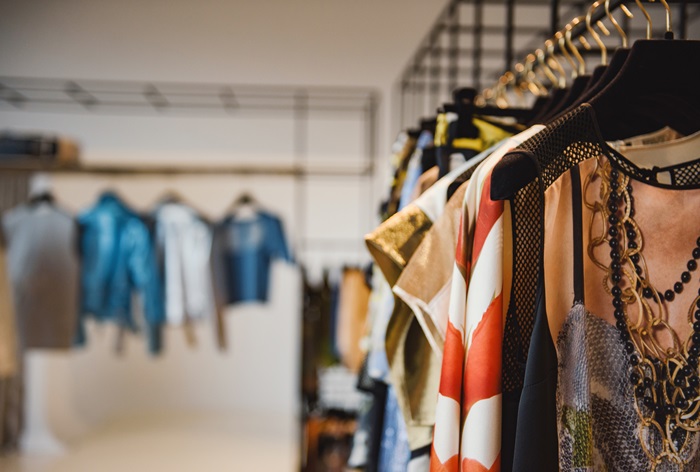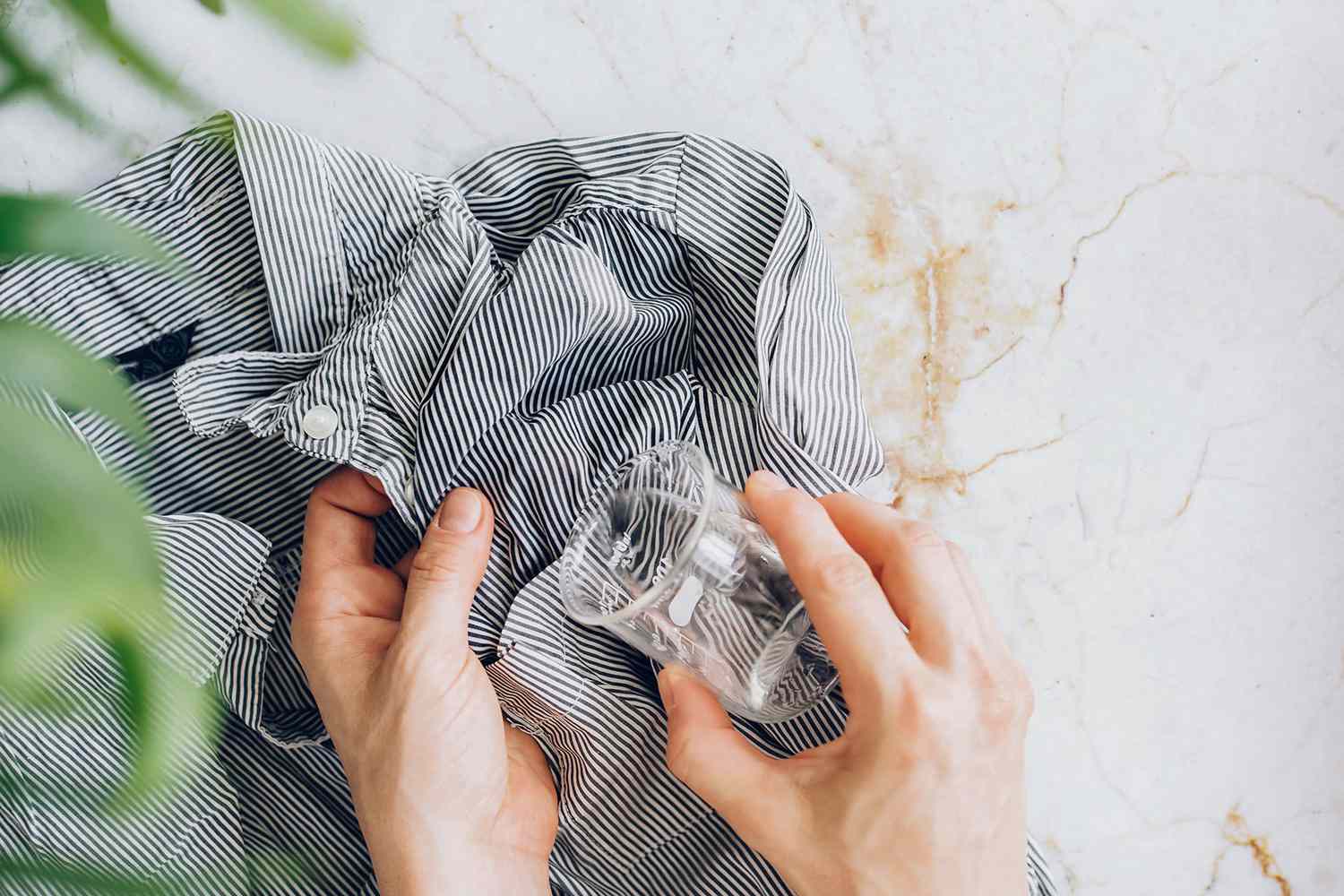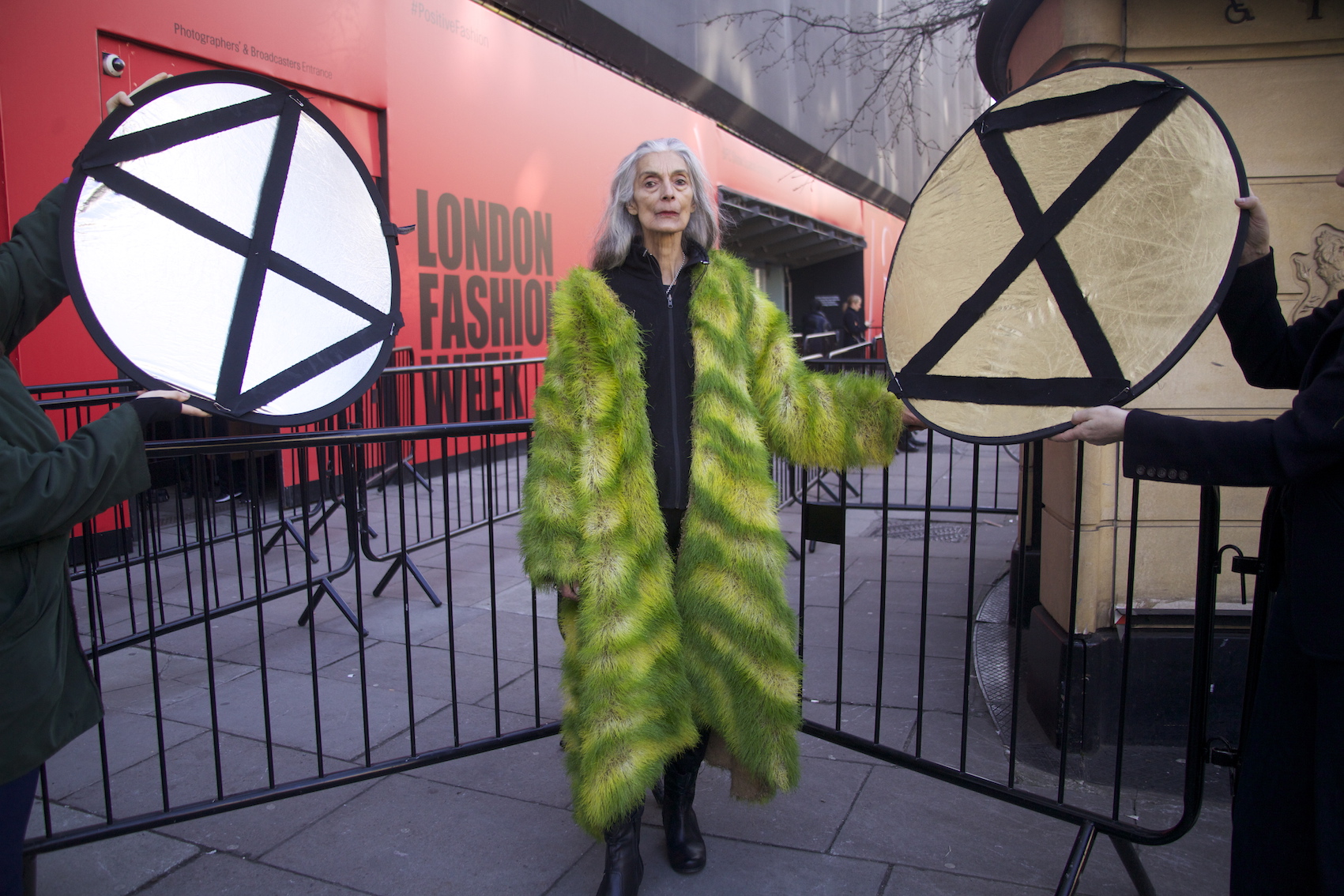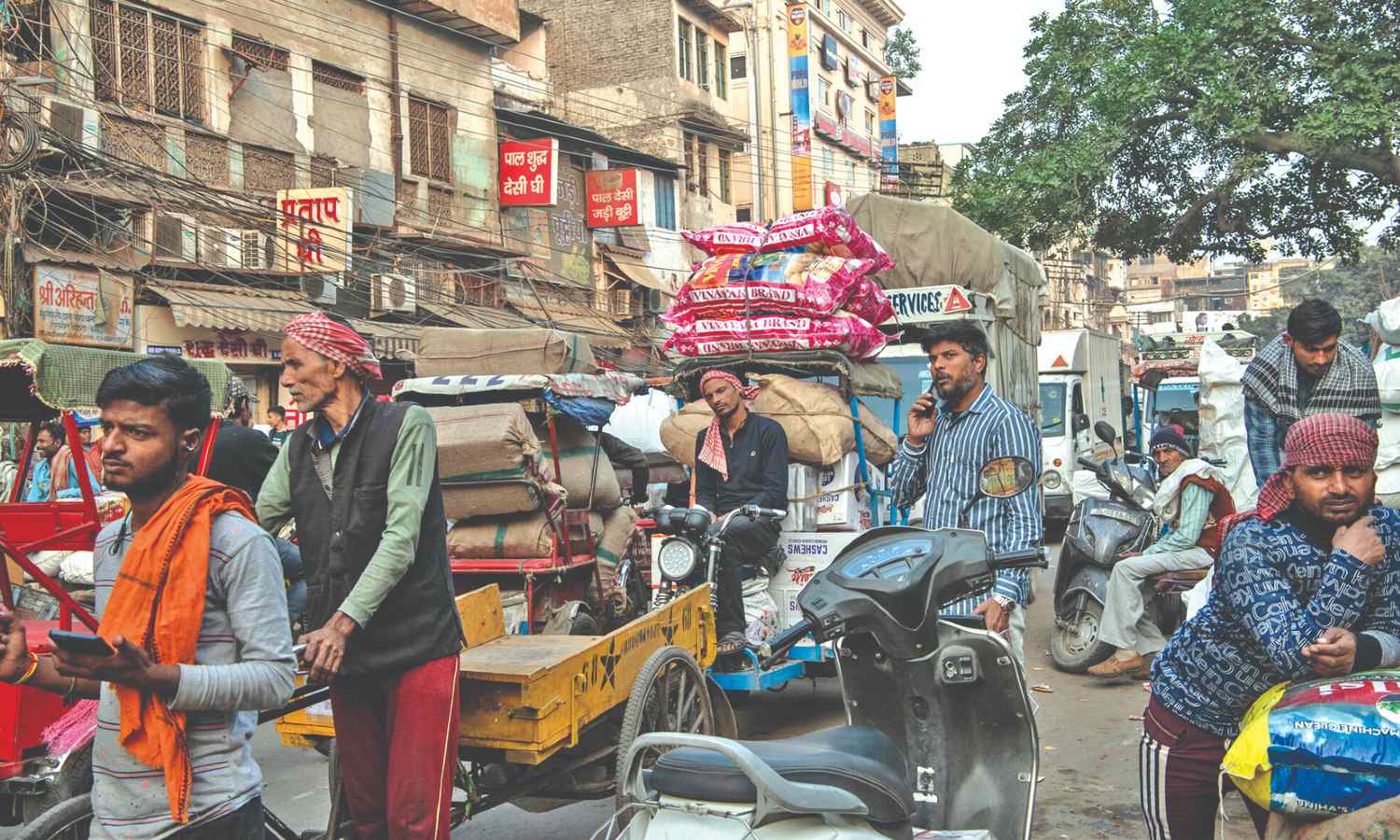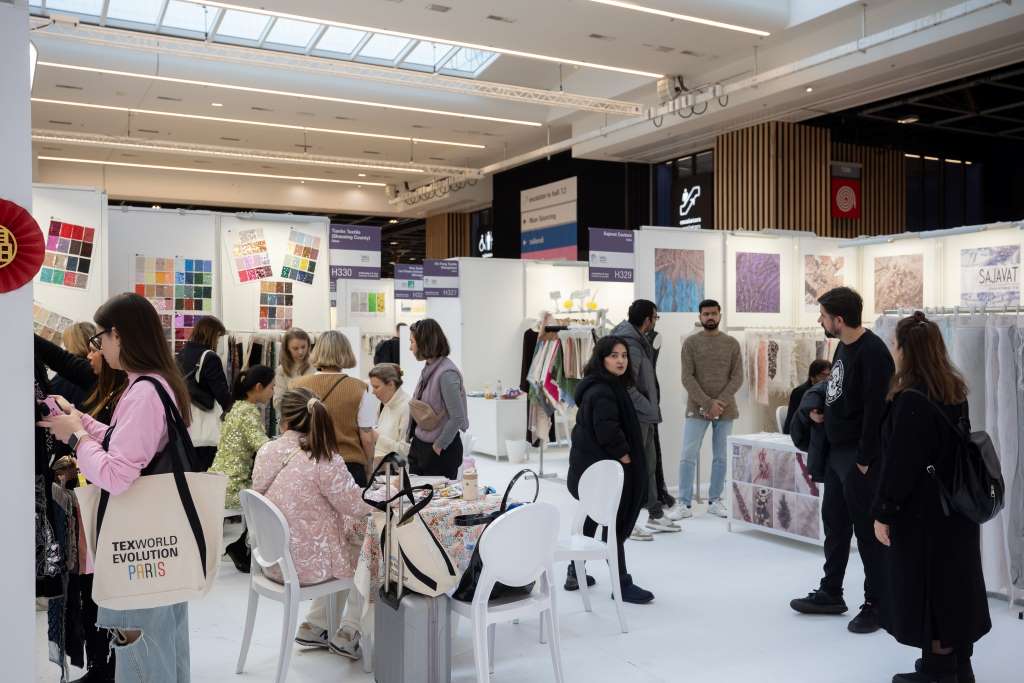FW
"Mercedes-Benz Fashion Week was held in Russia, March 17 to 17, 2017. More than 30 global fashion industry experts from nine countries gathered to discuss modern trends and the current challenges the industry is facing. The main topic of the conference was the destruction of fashion industry stereotypes, its transformation under the influence of the scientific and technological revolution."
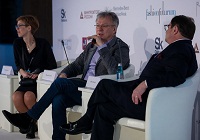
Mercedes-Benz Fashion Week was held in Russia, March 17 to 17, 2017. More than 30 global fashion industry experts from nine countries gathered to discuss modern trends and the current challenges the industry is facing. The main topic of the conference was the destruction of fashion industry stereotypes, its transformation under the influence of the scientific and technological revolution.
For two days global fashion industry experts discussed topics on modern education, foresight and expectations, promotion of young designers, stages of designer workflow, participation in a runway show, technology as the driver for the fashion industry, working with the new tech, starting a business and prospects for brands.
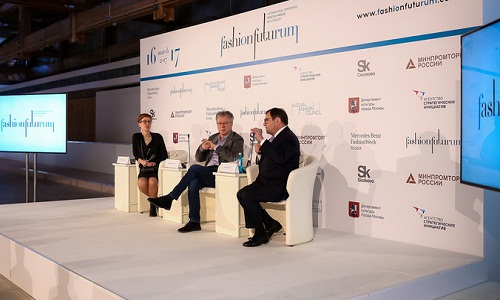
Finalists of the Innovative Solutions for Fashion Industry and Retail contest presented their startup projects. There were also presentations of the global product verification system, virtual tailors, digital 3D solutions for production and selling of clothes, distant cues from a fashion consultant, personal shopping chatbot assistants, functional prosthetic devices as modern fashion accessories and artificial intelligence capable of designing clothes.
The two-day Fashion Futurum international conference was the central stage for the main display of innovative fashion technologies. The business program consisted of panel discussions, public talks, workshops and presentations of startups.
Mohan Spintex is one the country’s largest vertically integrated textile groups. The Andhra Pradesh-based company opened in 2005 and after spinning and weaving, it is now looking at processing. In weaving it is adept at both narrow and wider width weaving and wants to have a similar expertise in processing. All these capabilities will help the company for a foray into home textiles. Home textiles are an area of focus for the company.
Value addition in terms of quality, consistent supply and committed delivery is what gives Mohan Spintex the competitive edge. The company which counts several major corporates as its clients exports close to 50 per cent of its produce to countries like Bangladesh, Pakistan, China and Europe.
Mohan Spintex today has an installed capacity of 1,20,000 spindles housed in one of the most modern spinning mills in India. From blow room to ring frames, Mohan Spintex makes use of state-of-the-art technology machinery to manufacture products that cater to the needs of the textile industry.
The company has exclusive sections for two for one twisters and ginning. It has the capability to enable seamless manufacture of textile products. Availability and retention of workforce, which have emerged as major challenges in the textile industry, are issues that have been tackled at Mohan Spintex. Quality systems and practices implemented in its manufacturing units, which while enriching the knowledge of the workforce, have helped it retain manpower.
Readymade garment exports from India (knitwear and woven) between April 1, 2016, and February 28, 2017, grew 3.5 per cent in rupee terms and 0.58 per cent in dollar terms when compared to the same period during the 2015-16 fiscal. Growth was negative in terms of the dollar during the first three quarters of the current fiscal till December 31.
In the case of exports from Tirupur knitwear cluster, garments worth Rs 23,253 crores were exported between April 1 and February 28 this fiscal after exports stood at just around Rs 16,600 crores till December 31. Now, with the sudden surge in exports, the cluster is hopeful of meeting the target of Rs 25,000 crores comfortably by March 31.
If not for the slowdown subsequent to Britain’s decision to exit the European Union, and a few other factors, the cluster could have reached an annual turnover of Rs 28,000 crores. Of the total exports till February end, knitwear alone contributed Rs 50,550.87 crores.
Exporters also feel the time is right for knitwear sector to capture the market that’s leaving China, due to an increase in cost of manufacturing. If the opportunity is missed, the market would be captured by competing countries like Bangladesh, Vietnam, Indonesia and Cambodia.
Over the past 20 years, e-textiles have progressed from an academic curiosity to an important technology platform generating revenue for companies globally. The most prominent products are types of compression apparel, where e-textile features are used to introduce sensing (including heart rate, respiration, motion, ECG, EMG, etc.), to provide heating or cooling, to apply current to muscles and potentially several more interesting new functions.
The application landscape is diverse, both in apparel for other sectors (work wear, military, fashion apparel etc.) and beyond apparel for a variety of sectors including medical, industrial and home textiles. Today, many of the most prominent e-textile brands remain relatively young, driven either by recent start-ups, spin-outs from larger companies lower in the value chain, or generally companies outside of the mass-market consumer sector in either textiles or electronics.
Top brands from the sports apparel and consumer electronics industries are adopting different strategies to investigate and eventually adopt e-textile products. With each passing level of development cycle, e-textile products are increasing in maturity, meaning that the risk and overheads required for a large product launch are gradually being eroded. Growing manufacturing know-how and efficiency means that a mass market order for e-textiles will soon be possible.
The Creative Group is a leading textile manufacturer with an annual turnover of Rs 1,000 crores. The Mumbai-based company has been growing by 30 per cent in the last five years. The group has 14 plants across India with over 8,000 skilled employees. Its brand Portico New York, opened in 2000, is into home furnishings. Leaving behind other players in the race, Portico New York has marked its presence at about 1,000 retail stores. The price band ranges from Rs 999 to Rs 15,000 per sheet set.
Reputed designers like Manish Arora, Neeta and Nishka Lulla and others have contributed to the in-house design capabilities of Portico New York. Creative’s textile division has an exclusive facility for yarn dyeing, stitching and made-up processing. Creative as a total group has widespread business interests and a presence in areas like real estate, power generation, organic fertilisers etc.
The group has a yarn processing capacity of 350 metric tons a month, weaving capacity of one lakh meters a day, polyester carpet yarn capacity of 300 metric tons a month. The demonetization drive did not affect textile topline numbers in the third quarter.
Creative’s textile division has an exclusive facility to weave wider width and processing sheeting, dobby and jacquard fabrics meant for international markets. About 15,000 bed sets get exported a day. With capacity expansion in weaving and modernization to close the gap that exists between their weaving and processing capacity and to meet demand with the expansion in garmenting process on cards, both at their Vapi and Dammu plants K N Singh, Executive Director of Creative is confident of maintaining the 30 per cent annual growth rate until 2020 and beyond. The group aims to touch Rs 2,000 crores by 2022.
Bangladesh has overtaken China to become the largest denim supplier to the European Union. The country has also become the third largest denim supplier -- after China and Mexico -- to the US. This was possible because of the millions of dollars that local denim fabrics makers have invested to set up state-of-the-art facilities in their plants.
Currently Bangladesh has 30 denim mills for which investment to the tune of a billion dollars has been made. The collective production capacity of the mills is 435 million yards a year. Bangladesh could win in the European denim segment not only for competitive prices but also for the quality of its products, shorter lead times and better commitment.
In terms of denim sales, the US and the UK are two major markets for Bangladesh. Bangladeshi entrepreneurs supply denim products to major global retailers including Levi's, Diesel, G-Star, H&M, Uniqlo, Tesco, Wrangler, s.Oliver, Hugo Boss, Walmart and Gap. The denim sub-sector could play a significant role in achieving the 50 billion dollar export target by the end of 2021.
By 2020, the global denim market will reach $64.1 billion while Bangladesh’s denim exports are forecast to reach $7 billion by the end of 2021.
The final day of Mercedes-Benz Fashion Week Russia started with a fashion show by H.A.R.D 3.0. ZAVTRA CLUB. H.A.R.D 3.0. ZAVTRA CLUB brand brings together a group of students of Art and Design School laboratory of the National Research Center (Higher School of Economics). For the Fall/Winter season they presented their interpretations of the future of fashion. ZAVTRA CLUB is a joint runway show where each participant shares common style features. The students showcased their ability to design new textures by deconstructing the old ones. As their basic colors, the designers picked white, black, khaki and burgundy.
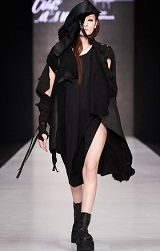
The final day of Mercedes-Benz Fashion Week Russia started with a fashion show by H.A.R.D 3.0. ZAVTRA CLUB. H.A.R.D 3.0. ZAVTRA CLUB brand brings together a group of students of Art and Design School laboratory of the National Research Center (Higher School of Economics). For the Fall/Winter season they presented their interpretations of the future of fashion. ZAVTRA CLUB is a joint runway show where each participant shares common style features. The students showcased their ability to design new textures by deconstructing the old ones. As their basic colors, the designers picked white, black, khaki and burgundy. The collection features white togas, colorful belt ribbons, fragments of bombers, long sleeve clothing with loose strings, bright capes with various patterns and nosebags. A print with photos of the student designers and ZAVTRA CLUB slogan became emblematic for the collection.
CIAO it's me! Instituto Europeo di Design Graduate Fashion Show consisted of two parts. The first was all about the ultra-modern grunge, a manifest of rebellious spirits. It was about complicated, vivid and asymmetrical feminine images of black and dimmed asphalt colors. The second part featured bright colors, being the positive yet no less rebellious one. The runway say creative t-shirts with the sickle and hammer emblem, men wearing skirts (as an expression of gratitude to the Scottish traditions), as well as a piece of beachwear, a black bikini combined with high knee socks.
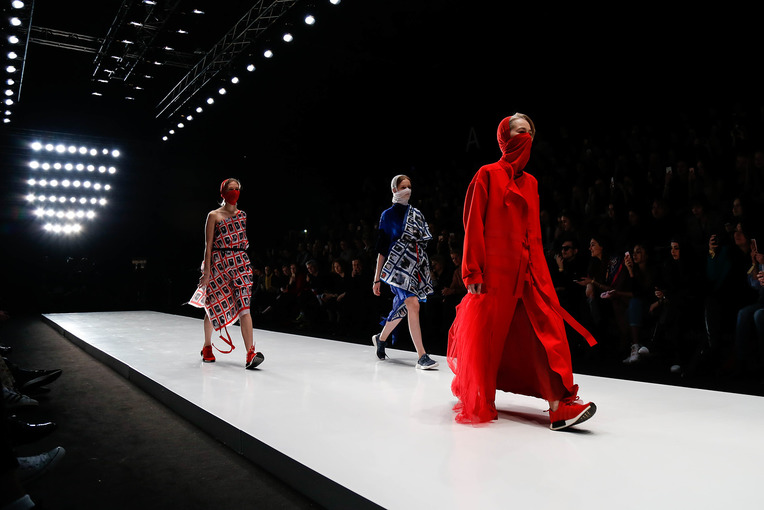
Next was The Moscow Fashion Show by Instituto Maragoni's School Of Fashion, Art & Design. VLADISLAV KRIVDIN is all about precise lines and bright highlights. MARNINA MICCI showcased tight lacework clothes, free shapes and easy-to-perceive feeling. TEMILAYO SUBAIR's collection is shrouded it mysterious forest themes. The collection is based on complicated images of natural shades –colors intrinsic to green leaves, wood, as well as shades of orange and grey. LILLA KIRILLA MOLVAN presented to the public her set of precise lines and clear silhouettes featuring leather biker jackets, straight midi skirts and strict hair styles. In her collection the designed relied upon fiery colors from deep yellow, red to coal grey and black. TUGBA AK is a mainly men's denim line of clothing. Vibrant green, pink, orange and yellow details serve as highlights. A collection presented by designer PRAEPLOY SOOKSAWEE expressed the fantasy side of clothing and a combination of femininity features. The runway saw мшщдуе dresses with a gradient to lilac, deep purple, pink and the softest lacework skirts and noble blouses. The catwalk was dominated with harmony and stylish beauty.
The day finished with a show by Slava Zaitsev’s Fasion Laboratory. In her collection GALINA BIRYUKOVA implemented elements of hoslters by using leather details and embroidery, combining all of that with a tinge of fatality added to tantalizing tenderness. DARIA KOZHINA got her inspiration from lava and lightning combining veiling and leather, dimmed shades with the bright ones, grunge with sport luxury. IRINA KRYUCHKOVA named her collection XXI century Cinderella to feature flirtations silhouettes, blackened gold, lacework and velvet capes. MIKHAILOV ALEKSEI's City Smart Dresser collection showcased freedom in comfort by choosing trousers with deep pleats, cosy short overcoats and scarves. BARBARA PLAVINSKY told a story of individual things that reflect elegance and uniqueness of their owners. NIKA SHABASHOVA presented her All That Is Mine with Me All the Time collection defined by easy fit, multi-layer structure and a great variety of details.
Presentation Box showcased an installation by 4BID - Four Body Influenced Designers. Young designers and engineers joined their forces to translate the codes of our body in the language of fashion. The pattern of the iris, fingerprints and an encephalograph can become a print for a dress or help create a shape for accessorize. This will make it possible to take the design to a new level of individualization. Graphic interpretation of emotions will help make clothes that would bear additional symbolic meanings.
Rippling floor-length dresses decorated with beads and embroidery, slim fit tops and soft pastel palette were characteristic of Firdaws runway show that was staged separately at the Petroff Palace. Refined silhouettes and silk kerchiefs decorated with lacework highlighted the chastity and kingliness of the images presented.
"The second day of Fashion Futurum international conference held during Mercedes-Benz Fashion Week Russia started with the panel discussion about local and global protection of intellectual property. Speakers were Maxim Dyshluk, Director Legal, Intellectual Property Depositary (Russia), and Alberto Crivelli, Partner, AMTF Avvocati (Italy). Evgeny Pen, CEO, Intellectual Property Depositary (Russia), moderated the discussion."
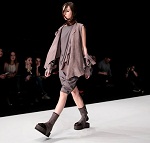
The second day of Fashion Futurum international conference held during Mercedes-Benz Fashion Week Russia started with the panel discussion about local and global protection of intellectual property. Speakers were Maxim Dyshluk, Director Legal, Intellectual Property Depositary (Russia), and Alberto Crivelli, Partner, AMTF Avvocati (Italy). Evgeny Pen, CEO, Intellectual Property Depositary (Russia), moderated the discussion.
Ludmila Novoselova, Chairman of Intellectual Rights Court, Doctor of Law (Russia), proceeded to speak about “Brand Protection Measures” during her public talk. The brand should consider its legal protection measures at the very early stages of development. Partial or complete design copying, infringing goods, emergency substitution of a recognizable brand’s name – all these problems can be avoided. The Court is unlikely to oblige the respondent to cover your losses, as these are hard to confirm and to assess, but you can be recompensed. You could also claim unfair competition. Legal deposition will help to uniquely determine your authorship. There are systems for trademarks registration in the legal environment of the Russian Federation, the European Union and in the international field.
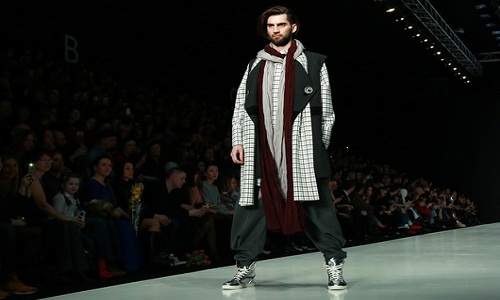
The yesterday lecture on investing into fashion was continued by Jeffry Aronsson, Founder & CEO, Aronsson Group LLC (USA), and Alexander Galitsky, Co- founder and Managing Partner, Almaz Capital Partners (Russia). Investments into venturous start-ups doesn’t attract everyone, but such projects can turn successful in the fashion industry, as this market is fast growing and changing. More cautious investors consider how fast can growth rates be in a specific segment, how authors of a start-up see their place in the system. It also matters if the start-up can produce a high-quality product that will attract the audience, in particular, the global audience. And naturally, whenever investors consider a start-up, they will look at its perspectives: if the brand’s boundaries can be extended, if other types of products can be produced under the collective mark etc.
The lecture was followed by a public talk about «IT Solutions and Mobile Apps for Fashion Brands: Is It a Game Changer for Fashion Business». Eddie Mullon, CEO of Launchmetrics, Founder of Fashion GPS, told about the challenges in the fashion world and the importance of IT-technologies in regard to the fashion industry development. Fashion GPS collects data both online and offline, proceeds and analyzes them, and finally assesses efficiency of a certain designer. This allows to orchestrate things in properly and to provide the maximum possible impact on the audience of interest. New tools help to solve most of the challenges and enhance performance.
In the conference room there was the panel discussion on ethical fashion. Among the participants of the panel discussion were Giusy Bettoni, CEO, C.L.A.S.S. Eco Textile Library (Italy); Piia Lehtinen, President of the Board, Design District Helsinki (Finland); Marina Kokorina, President, RusEcoModa (Russia). Covadonga O’Shea, Founder, ISEM Fashion Business School, moderated the session. The speakers reported on the importance of sustainable fashion, explained why nature resources have to be preserved. Marina Kokorina noted that there are companies in Russia that collect textile for recycling. “People that care about the environment think globally”, she emphasized. Giusy Bettoni remarked that fashion should be as transparent as possible, that supply chains need to be traceable, that all wishes of the customers should be accounted for. The speakers invited everyone concerned about eco-fashion to attend the eco-friendly fashion days that are to be held on June 28 to July 2.
Karim Rashid, designer (USA), spoke about the future of design. Today fashion has nothing to do with aesthetical clichés, it is all about novelty and functionality. You should consider your project, assess it critically. By making some product we create a reference that designers are going to use in the future. It is necessary to fit into the new environment, to use Internet technologies, 3D printing and other progressive tools. Designers should also consider their objectives as creators. As soon as they know the answer, it will be easier for them to find their unique style that their target audience will accept.
The panel discussion “Technology as the Driver for Fashion Start-up Success” was participated by Marvin Liao, Partner at 500 Startups (USA), Amanda Parkes, Chief of Technology & Research, Manufacture NY (USA), Eddie Mullon, CEO of Launchmetrics, Founder of Fashion GPS. In their presentations the speakers demonstrated the existing wearable technologies, disposable clothes and footwear, the Fashion GPS system that allows to gather statistics, show the necessary experts and images with barcodes. The speakers concurred that the financial chain is to be changed, starting from its very first links, that it is development of source materials should be invested in. Konstantine Karczmarski, Advisor to Innovations Department, ITMO University (Russia), who moderated the discussion, questioned the discussion participants about the things making innovative start-ups grow and succeed. Normally the projects that manage to succeed have a well-balanced team, a good view of their audience and possible partners, and a customer acquisition system. It is important to bring an innovative project to the market, when the demand for it has been outlined.
“The Cross-Border Market Opportunity: Today’s Growth Rocket” – this was the subject discussed by Anna Klinskova, Vice-President Sales and Marketing, DHL Express (Russia), and Oksana Shpitalnikova, Head of Customs Operations, DHL Express (Russia). Every year the e-commerce market is increased by 1/4, which makes it highly perspective. However, Web stores and applications should meet the customer’s needs. Express delivery, convenient and user-friendly interface can push up sales. The only documents needed for export are customs declarations.
Carlos Espinosa de Los Monteros, High Government Commissioner for the Spain Brand (Spain), participated in the public talk “The Winning Model of Spanish Fashion Industry”. The public talk was moderated by Alexey Bajenov, Founder, Be-in.ru (Russia). There are several principles of successful business. The first one is to consider the customer as the lever of the fashion industry engine, the second one is the timescale. If the designer want to use resources properly, times spent for any production processes are to be reduced. Carlos Espinosa noted that many people with different income can afford the Spanish fashion, and in his opinion, that was yet another reason why the Spanish brands are popular.
The discussion «Only Designers Will Remain: the Future of Fashion is About Creativity» was participated by Vladimir Philippov, Deputy Head of Department of Culture, Moscow Government (Russia), Karim Rashid, designer (USA), Princess Beatrice D’Orleans, President of the Spanish Luxury Association, Ambassador of Dior (Spain), and Dmitry Peskov, Director, Young Professionals, ASI (Russia). Alexander Shumsky, Executive President, Russian Fashion Council (Russia), moderated the discussion.

Karim Rashid and Princess Beatrice proclaimed the paramount role of creativity in the designer’s business. The matter of the person responsible for the fashion problem is critical, but supervising works at every stage will reduce the time associated with the creative process itself. Vladimir Philippov remarked that it is important to offer financial support to young brands and that investments in innovative technologies are perspective. Alexander Shumsky and the speakers expressed their confidence that technical production modernization will allow the designers to concentrate on their creative activities.
The discussion "Upgrading Traditional Retail: Creating a Fluid Shopping Experience" was participated by Michael Burke, Head of Industry, Fashion, Sports & Toys, Google (USA); Scott Emmons, Head of the Innovation Lab, Neiman Marcus (USA); Alla Verber, Vice-President, Mercury Russia, Fashion Director, TSUM Department Store (Russia); Anna Klinskova, Vice-President Sales and Marketing, DHL Express (Russia), and Arina Slynko, Deputy General Director Federal Center for Light Industry, Director, All-Russia Forum on Light Industry, Ministry of Industry and Trade (Russia). The speakers discussed the general situation in the fashion market and considered how the customer’s demands change and develop retail. Arina Slynko said, “The experts say that millenials are going to influence the consumption model changing”. Alla Verber agreed with that and said that the generation change caused the sales system change – many turn to Internet, and that’s why we can consider buying luxury staff directly from home. If we talk about TSUM, according to the expert opinion, total value of online sales is only 5% from the general turnover. “I don’t think our nation has been satisfied with the purchasing opportunities”, Alla Verber emphasized. “I am sure that we all love buying things and trying them on in the stores. We’ll need 20 years more for an absolutely new generation to grow up and for the consumption system to change”. In general, all speakers agreed that the offer should be adopted in accordance with the customer’s needs and should offer them conditions with as simple and clear communication between the supplier and the consumer.
Gary Stewart, Director of Wayra (UK) talked to the visitors of the conference about “Acceleration Models for the Fashion Industry”. Gary demonstrated how technologies can simplify communication with the customer. His company develops the artificial intelligence that will discover target audiences. If you have a start-up, you need to understand how you can attract the customers, how you are different from the others, to see your strengths. The speakers believe that cooperation with large brands interested in investing into perspective projects is also a great strategy.
The matter of «Local Becomes Global: How National Brands Can Succeed on the Global Marketplace» was discussed by Victor Evtukhov, State Secretary, Deputy Minister of Industry and Trade of the Russian Federation (Russia), Carlos Espinosa de Los Monteros, High Government Commissioner for the Spain Brand (Spain), Jeffry Aronsson, Founder & CEO, Aronsson Group LLC (USA), Pascal Morand, Executive President, French Federation of the Haute Couture and Pret-a-porter (France). Igor Bartsits, Director of IPACS, RANEPA (Russia), moderated the discussion. Victor Evtukhov said that the state is concerned about helping the Russian brands to become recognizable. Cooperation with them brings much more profit after they become recognized and go global. Brands that celebrate the Russian culture and aesthetic traditions have great market potential. Pascal Morand agreed that cultural identification of a brand matters. Carlos Espinosa recommended to assess the brand’s advantages and to use them. He gave notice to the high expertise and textile industry of the pre-revolutionary Russia and expressed his hopes that it will recover. Jeffry Aronsson indicated that building relations with consumers and partners will be really helpful in terms of perspective development.
Marvin Liao, Partner at 500 Startups (USA), shared his opinion on the rules that authors of start-up projects should follow. The platform that Marvin develops promotes innovative projects within the fashion industry. The speaker called e-commerce an important tool. We have interesting conditions for start-ups now. There is a whole set of technologies like social media, where almost free of charge you can comprehend and measure the public reaction. You can start a Web store and dispose of the territorial belonging. Successful business can afford scalability and going global, but a start-up cannot. “Don’t try to become a big player at once. Start with one customer or a small group, satisfy their needs. A beginner can’t match mass demand”, this is what the speaker is sure about.
Olivia Spinelli, Fashion Coordinator at IED Moda Lab, Istituto Europeo di Design (Italy), introduced Giorgia Laureti and Parisi Luciano, IED Milan Graduates (Italy). She was aided by Olga Myelkova, Group Area Manager (Russia), the moderator. Studying in the European Design Institute is based on strong connection with the production sphere. An idea is not enough, a project should be brought to implementation. To keep up with the high quality standards and to accurately realize your ideas, you need full immersion, you need to know how business processes are started up. The graduates told how studying in IED Milan helped them to find their personal unique style and to understand where they should start their journey in the fashion industry.
On March 17, a Start-up show took place during Mercedes-Benz Fashion Week Russia. Authenticateit – a global system for checking authenticity of goods; Virtual Tailor – digital 3D solutions for apparel production and sales, MNEidet (It suits me) – distant advice of fashion consultants; Bombow.me – a personal chatbot assistant for shopping, Dress Code A.I. – a virtual fitting room, Sibirsky Proekt LLC – an electronic card instead of dozens of privilege cards; Project 1 – shopping of the future; Motorica - a functional prothethis as a state-of-the-art trendy accessory; E-Contenta – artificial intelligence for native advertisement; MF Studio – artificial intelligence that develops apparel design; GetShop.TV transforms spectators into buyers; Surfancy – an interactive window display, Higher School of Light Design at ITMO University – a backpack with a turn signal that reacts to the bicycle movement, dynamically lit accessories and bio-perceptive fashion, a smart chameleon coat; Agat Ltd. – multifunctional IT clothes that changes color depending on the wearer’s mood; a wheel chair – SI 1101 to demonstrate clothes specially designed for the disabled; CITYBag – convenient mobile luggage for a contemporary citizen.
Here are some of the most interesting start-ups:
Style Counsel – an application available in Apple Store that has the online stylist feature. With it you can have comments on your look at any time of the day. You just need to make a selfie and to ask a question like “Should I buy this dress?” And bloggers from all over the world will help you to make a decision about your purchase or your look.
ShareCloth.con allows designers to combine their design skills with revolutionary 3D technologies. 3D printing in the future will require making design in a special application, printing and instant selling online with consequent smooth shipment. This will significantly speed up the process, and it will take much less time from the idea to its implementation and testing.
Cloudburst - smart clothes from magnetic fabric that can transform in accordance with the wearer’s needs. The outstanding feature of this technology is that the fabric is draft- and pollution-proof.
Brutally 3D footwear – the concept of the project is making unique footwear and accessories design with a 3D printer. Founders of the project cooperate with orthopedists to design footwear in accordance with the anatomic standards.
Posh – this is a creative start-up that developed a unique smart pendant that can synchronize with your smartphone via Bluetooth. That is why the pendant can show any image – it can be a picture or an inscription, or a word for the world from the owner of this trendy accessory.
#TOLSTOVKAMECHTY (Dream Sweatshirt) – offered anyone to make a comfortable and trendy sweatshirt with color, style, inscriptions and prints of the buyer’s choice. The most difficult part is to choose the design, and getting your dream sweatshirt is as simple as ABC, the authors of the project say.
SC-TEK presented their smart treatment for beach fabrics. Every fiber is treated independently in the atmosphere of compressed CO2. This is an eco-friendly process. It will be possible to treat fabrics on industrial scale, and the treatment process won’t take more than one hour.
Bundlesapp – this is a smart shopping assistant bot in the messenger. Just enter your query, and your personal bot will choose things that suit you by model, by color, by size and by price. In reply to your query the bot will send you a picture of the thing found along with the link to the site where you can get it.
Cardberry offered to replace all privilege cards or to load them all into your smartphone. This projects ensures data storage and makes shopping more convenient.
Try. Fit Start-up – this is a unique 3D scanner stop that helps the customer to find his/her perfect shoes. No more sufferings from uncomfortable or poorly selected shoes. Customers should just scan their feet in the store to make sure that the footwear offered by the application suits them. After that the 3D clone of the customer’s shoe is saved in the data base, and the customer can order footwear online, from home and be sure that the size will be just fine. Now Try.Fit cooperates in Russia with Adidas and Ekonika.
Preloved – this is a joint French-Russian project of online shopping. This project will allow the customer to buy second-hand clothes and accessories of premium and luxury brands online and not to be afraid of buying counterfeit things. All goods are double-checked for ingenuity and compliance. The experts guarantee that counterfeit things will be discovered at early stages.
"Prime Minister Narendra Modi ‘Make in India’ and ‘Zero Effect; Zero Defect’ campaigns of 2014 attracted manufacturers and FDI into the country making the economy stronger. Textile industry is integrated with agricultural sector and generates many other aligned industries. Textile sector’s total production is more than $108 billion and contributes more than 5 per cent to GDP. The size is expected to touch $226 billion market by 2023 at a CAGR of 8.7 per cent."
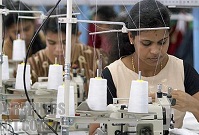
Prime Minister Narendra Modi ‘Make in India’ and ‘Zero Effect; Zero Defect’ campaigns of 2014 attracted manufacturers and FDI into the country making the economy stronger. Textile industry is integrated with agricultural sector and generates many other aligned industries. Textile sector’s total production is more than $108 billion and contributes more than 5 per cent to GDP. The size is expected to touch $226 billion market by 2023 at a CAGR of 8.7 per cent.
Built on self-sustenance
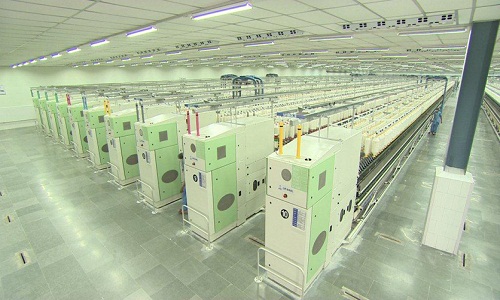
Indian textile industry is self-sustaining as the country is capable of running the industry from raw materials production to finished products on its own. Comprising of small-scale, medium-scale, large-scale, non-integrated, spinning, weaving, finishing, and apparel-making firms and enterprises, the textile and apparel industry is broadly divided into three segments: yarn and fibre (includes natural and man-made), mainly consists of cotton and jute. Therefore, cotton and jute sector is highly linked with textile industry. Second is processed fabrics, (including woolen textiles, silk textiles, jute textiles, cotton textiles and technical textiles). Third one is Readymade Garments (RMGs) and apparel. The unorganised sector includes handlooms, powerloom, hosiery, Knitting, readymade garments, khadi, carpet and handicrafts manufacturing units.
Surmounting challenges
The industry’s fragmented nature poses numerous challenges in the industry’s growth. Most manufacturing units have small capacities with low efficiencies, which make them globally uncompetitive. Facilities for realising the Prime Minister’s vision ‘Make in India’ with ‘Zero Effect; Zero Defect’ at each level of the value chain is absent and the cost of production and logistics is high. Moreover, scarcity of skilled manpower is a problem. And even though exports of textile and apparel products are growing it is limited to only a few markets. The EU and the US remain the major destinations with 50 per cent share of Indian export market. There are several finished goods categories such as suits, women’s western wear, intimate wear, swimwear, outerwear, etc., which has multibillion-dollar trade globally but India’s share is nominal. Also, there are several large markets like Japan, Russia, China, Brazil, South Korea, etc., where India’s share is low.
India’s basic strength is its strong production base of a wide range of fibre/yarns from natural fibres like cotton, jute, silk and wool to synthetic/man-made fibres like polyester, viscose, nylon and acrylic. Cotton production over the past few years has been unstable. Production of raw cotton in India grew from 28 million bales in FY07 to 38 million bales in FY15, but in FY16 production declined to 2.8 per cent over the FY15.
Vision for the future
India aspires to achieve 20 per cent growth in exports over the next decade. Going by calculations, achieving 15 per cent growth in exports should be feasible. In the domestic market, sustaining an annual growth rate of 12 per cent is also an achievable number. With a 12 per cent CAGR in domestic sales, the industry should reach a production level of $350 billion by 2024-25 from the current $100 billion for the domestic market. With 20 per cent CAGR in exports, India would be exporting about $300 billion of textile and apparel by 2024-25 while with the lower 15 per cent CAGR in exports, India would be exporting about $185 billion. India needs to increase its market share of 15 per cent to 20 per cent of the global textile and apparel trade from the current 5 per cent. But there are many challenges. To achieve the ambitious target, 35 million skilled workers would be required by 2024-25.
The way ahead
The textile industry in India traditionally, after agriculture, is the only industry that has generated huge employment for both skilled and unskilled laobur. But for global competitiveness, quality and productivity improvement are of utmost importance. Also, the sector needs to be made attractive enough for investors to speed up its growth rate. It needs to get $180 to $200 billion investment for achieving the production capacity of about $650 billion by 2024-25. This is a challenge. The essential prerequisites for getting investments on the scale required availability of developed land with adequate infrastructure, skilled workforce and easy connectivity to ports.
Walmart has acquired ModCloth, an American online women’s fashion retailer. The deal is part of an effort to increase Walmart's e-commerce footprint. Due to the acquisition, designers selling on ModCloth will now have an opportunity to expand their client base through Walmart’s e-commerce sites.
ModCloth, founded in 2002, will continue to operate as a standalone and complementary brand to Walmart’s other e-commerce sites and will bring experience and talent to strengthening the company’s fashion business aimed at millennials. Independent designers who sell on ModCloth’s site will gain the opportunity to expand their reach.
ModCloth has one physical store in the US. Its clothes spell quirk and originality. The ModCloth acquisition positions Walmart to gain the experience of a well-recognized specialty apparel e-commerce brand that's trusted by millions of millennial women.
ModCloth is known for its alternative, indie vibe and size-inclusive philosophy — kind of the opposite of Walmart. The indie retailer is most popular with 18- to 35-year-old women, a group Walmart wants to entice.
ModCloth had struggled to operate profitably and had been unsuccessful in recent attempts to raise additional funding. The company carries plus sizes and has a unique approach to fashion that mirrors its founders' fondness for vintage goods.

